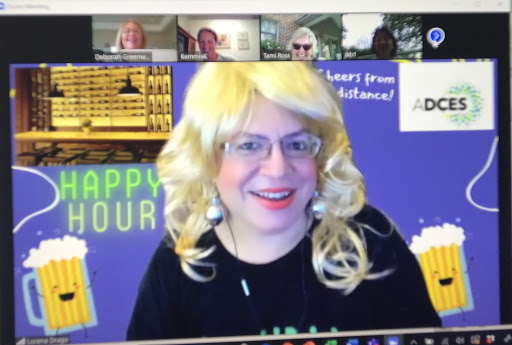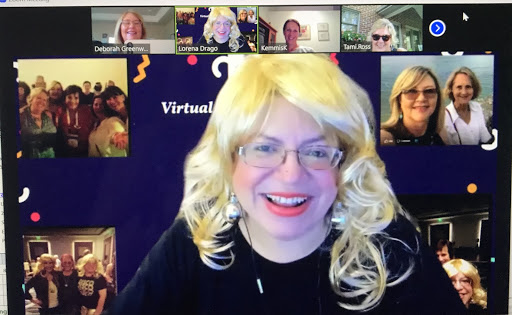If you can’t fly then run, if you can’t run then walk, if you can’t walk then crawl, but whatever you do you have to keep moving forward. – Martin Luther King Jr.
As we launched into 2023, a personal goal for us both has been to focus more on the positive in our lives and do more of what’s working for us (core principles of a solution-focused approach to life). The above quote from Martin Luther King drives home the point that we have to keep moving forward. So, how do we each know if we’re better today compared to 2 years ago? Or even 4 months ago? We don’t… unless we’re keeping track…and that’s one way journaling has helped bring improvement in our lives. As part of our daily journaling, we take a moment to record at least 1-2 specific things we are grateful for in the day and a daily affirmation. We grow through reflection. So 4 months into this journaling journey, we decided to step back and see what we have learned – and share some of our learnings with you. Today’s blog is a little longer than usual. Thanks for reading and we hope you find it insightful.
TAMI’S LEARNINGS
Be present and be intentional
Hey, this is Tami writing. At the start of his journaling journey I had 2 personal goals over this year: 1) To practice being more present in the moment and what it has to bring and 2) To be intentional. I am in no way where I want to be, but I’m making progress!
Tami’s Big 6 Observations
- Consistency is important. A few days off track because life happens and it’s easy to lose focus on what’s good. Consistency in journaling helps me maintain focus on the positive.
- Work-life balance improves my happiness. I am happier when I leave work on time. The days that I get home just a half hour earlier makes a big difference.
- Nature brings joy. These gifts of nature have included a dusting of snow sparkling on roof tops on my drive to work. Sunshine and longer days. A blooming redbud tree and fragrant yellow daffodils in the backyard.
- Flexibility in my schedule reduces my stress. The rare opportunity to work from home for even 2 hours, rather than in the office, made a difference in my stress on those days.
- I feel calmer when I get the difficult things done early in the day.
- Pause and put my “problems” in perspective. When I get overwhelmed with life, I need to pause and remind myself of the people in my life that are dealing with many more challenges than me. That helps put my problems in perspective.
5 things I expressed gratitude for:
- When my sweet daughter-in-law dropped by homemade pad thai and a fun book for me to read
- Cleaning out 3 drawers and dropping off a donation bag
- Coming home from work to see the neighborhood kitty has stopped by for a catnap on our back porch sofa
- Laughing with friends at the end of a long day.
- An unexpected call from my son just to say “hi”
2 impactful daily affirmations I’ve used:
- I can choose to be happy
- I CAN do this. I have no need for fear.
DEB’S LEARNINGS
This is Deb writing now. Like the graphic image in this blog, in 2023 I want to focus on things that I have control over in my life and spend less time thinking about or worrying over the things I can’t control. Based on those 6 categories in the image, here are some examples of what I’ve been doing and thinking about so far this year.
Deb’s Big 6 Observations
- My boundaries. I have been focused on setting boundaries at both work and home so I can focus on things that are important to me and my family. Sometimes that has meant canceling a trip when life gets too busy and other times, simply knowing I can say “no”.
- My thoughts and actions. I tend to think that I have to be busy and productive all of the time….that down time is wasting time. I travel a lot for work and sometimes I’m just tired…..I’ve allowed myself to spend a whole day in my PJs and watch some of my favorite shows or listen to a great audiobook and enjoy doing something that does not appear to be productive (but it really is!).
- The goals I set. I’ve been following our solution-focused goal setting approach by trying to do more of what works, and leaning in to what those situations are. I am more of a night owl but I noticed that when I go to bed earlier it’s much easier for me to wake up feeling refreshed. So I started to wake up at 5 am every weekday morning so I’ll be tired by 10 pm and be able to fall asleep. It’s hard to do when traveling, so this is still a work in progress.
- What I give my energy to. I have always talked about “bucket list” items, but this year I created an actual list and started to check things off. I love to travel, so travel locations are a big part of my list….I’ll be checking off quite a few later this spring. My daughter and I splurged and saw Adelle in Las Vegas (they’ll never be a show better than that!). I saw the California Poppy SuperBloom just last week. My list has both big and small things. I want to imprint as many images and memories as possible.
- How I speak to myself. When I used to commute to work I would use my drive home at the end of the day as an opportunity to actually speak to myself and assess what went well, what could have gone better. I focused on how I could improve and also what I was proud of. Now that I work at home, I’m not doing that anymore. I’ve been using my journal as a way to start this habit again.
- How I handle challenges. Generating solutions, as you know, is a solution-focused habit. I’ve been trying to focus on how to make changes to move in the direction I want to go instead of “fixing” the problem. This is not always easy, but it’s the best way I’ve found to deal with challenging situations.
5 things I expressed gratitude for:
My favorite tool and daily ritual when home is “feeding” the Gratitude Bird! Even if it’s small, saying those words and putting a pebble in the bird’s mouth makes me smile. Some of the things I’ve been grateful for are simple and some are big:
- Sitting in front of a fireplace
- Having my cat on my lap during a work meeting
- My son moving back to the west coast from Indiana
- A bright blue sky
- My future daughter-in-law and how happy she makes my son.
My most impactful daily affirmation:
- I can choose to be healthy.
Let us know if some of our learnings resonate with you and spur topics for discussion within your professional practice.
If you are a health care professional and interested in learning more about our solution-focused practice and approach, when you subscribe to our blog, we’ll send you in return a FREE resource of 10 Solution-Focused Questions to start a solution-focused discussion with your clients.
Follow us on Twitter @AFreshPOVforYou
Deb is employed by Dexcom, but her words and opinions in this blog are her own.
Tami is employed by the University of Kentucky HealthCare Barnstable Brown Diabetes Center, but her words and opinions in this blog are her own.


















